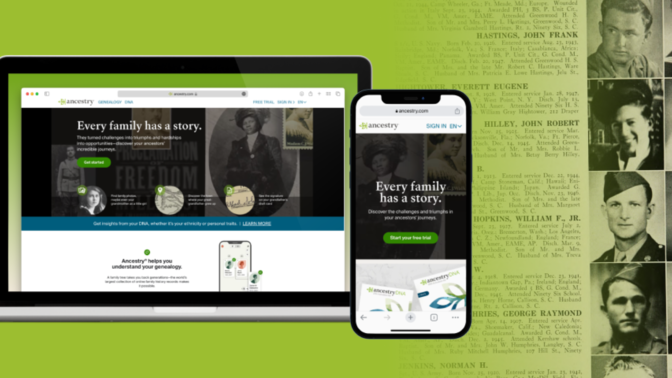
The ultimate guide to product roadmaps: strategies, templates, and best practices

As products grow more complex with additional features, platforms, and customer segments, it's important to streamline the design process. Product roadmaps support effective decision-making and communication across teams to drive successful execution. They outline the strategic objectives, timelines, and capabilities, mapping back to overarching organizational goals. They frame the most critical problems to solve and provide transparency into resourcing tradeoffs. This visibility establishes the shared understanding needed for stakeholders and functional groups to coordinate over realizing product potential.
What is a product roadmap?
A product roadmap is a strategic plan that outlines the development and progression of a product over time. It serves as a communication tool, aligning all stakeholders around a common vision and ensuring that everyone is on the same page regarding priorities, goals, and timelines.
Importance of a product roadmap
A product roadmap is essential for several reasons. First, it aligns all stakeholders, from developers to executives, ensuring everyone understands the product’s vision and how each milestone contributes to that vision.
Second, it helps with prioritization, allowing teams to focus on the most important tasks by evaluating the strategic importance of each feature within the roadmap and avoiding distractions.
Third, it's a communication tool that informs everyone about the product’s progress and upcoming features.
Types of product roadmaps
There are various types of product roadmaps, each tailored to different needs and audiences. Understanding these types can help you choose the right one for your product.
1. Strategic product roadmap
A strategic product roadmap focuses on long-term goals and the overall vision for the product. It aligns with the company’s broader business objectives, ensuring that the product’s development efforts contribute to the company’s growth and success.
2. Agile product roadmap
An agile product roadmap is flexible and iterative, designed to accommodate changes based on feedback and evolving market conditions. It’s particularly useful in environments where requirements frequently change, as it allows teams to pivot quickly and adjust priorities.
The product roadmap planning process should involve internal teams and stakeholders, especially customer-facing teams, to gather valuable feedback and insights.
3. Release roadmap
A release roadmap details the features and updates that will be delivered in specific releases. It is typically used to coordinate efforts between development teams, marketing, and sales teams, ensuring that all parties are prepared for upcoming launches.
4. Feature-based roadmap
A feature-based roadmap is centered around the development of specific features. It outlines when each feature will be developed and released, making it an essential tool for product managers who need to prioritize features based on customer needs and business value.
Case study: American Airlines

American Airlines leveraged a strategic product roadmap to revamp its digital experience. By integrating customer feedback into their roadmap, they were able to prioritize features that enhanced the booking and check-in processes. This led to a 15% increase in their QXscore, a proprietary metric that measures UX performance, showcasing the impact of a well-aligned product strategy.
The role of product strategy in roadmapping
A product roadmap is only as effective as the strategy behind it. Your product strategy provides the foundation for your roadmap, guiding decisions about what features to prioritize, what markets to enter, and how to allocate resources.
Defining your product strategy
A product strategy is a high-level plan that outlines what you want to achieve with your product and how you plan to achieve it. It should align with your company’s overall business objectives and consider market trends, customer needs, and competitive dynamics.
Aligning your roadmap with product strategy
Once your product strategy is defined, your roadmap should be crafted to support that strategy. Every feature, update, and initiative on your roadmap should contribute to achieving the strategic goals outlined in your product strategy, guided by a clear strategic direction that informs product management and development efforts.
Case study: Ancestry

Ancestry, the leading for-profit genealogy company, aligned its product roadmap with a clear product strategy focused on user engagement. By prioritizing features that enhanced user experience, they saw a significant increase in subscriber conversions. Their roadmap, grounded in a solid strategy, ensured that every development effort contributed to their overarching goals.
How to create a product roadmap
Creating a product roadmap involves several steps, from defining your vision to selecting the right product roadmap template and communicating it to stakeholders. Let’s break down each step.
1. Define your product vision
Your product vision is the starting point for your roadmap. It’s a statement that describes the ultimate goal of your product—what you want it to achieve and how it will benefit your users. A clear vision helps guide every decision you make throughout the product development process.
2. Set clear objectives and key results (OKRs)
Objectives and Key Results (OKRs) are measurable goals that help you track progress toward your product vision. OKRs should be specific, measurable, achievable, relevant, and time-bound (SMART). They provide a clear framework for evaluating the success of your roadmap.
3. Gather and incorporate customer feedback
Customer feedback is critical to ensuring that your roadmap aligns with user needs. Use tools like UserTesting to gather insights from your target audience. This feedback will help you prioritize features that will significantly impact user satisfaction and business outcomes. Additionally, insights from customer success managers, who are in ongoing communication with clients, can provide valuable information such as feature requests and customer feedback.
4. Prioritize features and initiatives
Not all features are equally important. Prioritization frameworks like RICE (Reach, Impact, Confidence, Effort) can help you evaluate which features should take precedence. The goal is to prioritize the features that will deliver the most value to your users and your business.
5. Choose the right product roadmap template
The right template can make or break your roadmap’s effectiveness. Whether you prefer a Gantt chart, a Kanban board, or another format, choose a template that suits your needs and audience. The template should clearly communicate your strategy, priorities, and timelines. Consider using an agile product roadmap template to ensure it supports agile methodology and accurately reflects progress.
6. Communicate the roadmap to stakeholders
Your product roadmap is a communication tool. Once it’s created, present it to your stakeholders, explaining the reasoning behind your decisions and how the roadmap aligns with the overall product strategy. Regular updates are essential to keep everyone informed of progress and changes.
Case study: Costa Coffee

Costa Coffee, the world’s second-largest coffee chain, used a release roadmap to guide the development of its Click & Collect app. By incorporating continuous user feedback into their roadmap, they were able to prioritize features that met the needs of their diverse customer base. This approach led to a 1,500% increase in Click & Collect sales over three years, demonstrating the power of a user-centric roadmap.
Best practices for product roadmaps
Creating a product roadmap is just the beginning. To ensure its success, you need to follow best practices that keep your roadmap relevant, realistic, and aligned with your product strategy.
1. Keep your roadmap flexible
A product roadmap should be a living document that evolves with your product. Regularly update it to reflect new insights, changing market conditions, and customer feedback. This flexibility ensures that your roadmap remains relevant and actionable.
2. Align your roadmap with business goals
Your roadmap should be tightly aligned with your broader business goals. Regular reviews with key stakeholders and the product team are essential to ensure that your roadmap supports the company’s strategic objectives and delivers value to customers.
3. Focus on outcomes, not just outputs
It’s easy to get caught up in the features you’re building, but it’s more important to focus on the outcomes you want to achieve. Your roadmap should emphasize the desired outcomes—such as increased user satisfaction, market growth, or revenue—rather than just a list of features to be developed.
4. Communicate clearly and frequently
Effective communication is critical to the success of your product roadmap. Regularly update your stakeholders on progress, challenges, and any changes to the roadmap. Clear communication helps maintain alignment and ensures that everyone is working towards the same goals.
5. Incorporate feedback loops
Establishing feedback loops is crucial for refining your product roadmap. Continuously gather input from users, stakeholders, product teams, and other team members. This feedback helps you adjust your roadmap to remain aligned with user needs and market dynamics.
Case study: HelloFresh

HelloFresh, the global leader in meal kit delivery, exemplified the importance of feedback loops in their product roadmap. By continuously integrating user feedback into their development process, they were able to make data-driven decisions 400% faster, significantly reducing the time-to-market for new features. This agile approach allowed them to stay ahead of competitors and consistently deliver value to customers.
Product roadmap examples
Seeing examples of different types of product roadmaps can provide inspiration and guidance for creating your own. Here are a few product roadmap examples that illustrate how different approaches can be applied.
1. Strategic product roadmap example
A strategic roadmap for a SaaS company might include high-level goals such as "Expand into new markets" or "Increase ARR by 20%." These goals are supported by key initiatives like "Launch new pricing model" and "Develop partnership program."
2. Agile product roadmap example
An agile product roadmap for a mobile app might break down the development process into sprints, with each sprint focusing on specific user stories or features. This approach allows for flexibility and quick adjustments based on user feedback and market conditions.
3. Release roadmap example
A release roadmap for an e-commerce platform might outline the launch of a new checkout process, with key milestones such as "Beta testing," "Full release," and "Post-launch analysis." This roadmap ensures that all teams are aligned and prepared for the release.
4. Feature-based roadmap example
A feature-based roadmap for a productivity tool might prioritize the development of a new collaboration feature, with phases such as "Design," "Development," and "User Testing." This type of roadmap helps product managers focus on the most impactful features.
5. Technology roadmap example
A technology roadmap for a software company might detail the infrastructure and tools required to support upcoming features. It could include initiatives like "Migrate to cloud infrastructure" or "Implement CI/CD pipeline," ensuring that the technical aspects of product development are aligned with the overall strategy.
Case study: Expedia

Expedia’s agile product roadmap allowed them to iterate quickly on new features, gather user feedback, and make adjustments in real-time. This agile approach, supported by a dynamic roadmap, led to significant improvements in the user experience and a more streamlined development process.
Tools for creating product roadmaps
Several tools are available to help you create and manage your product roadmap. These tools offer various features, from customizable templates to real-time collaboration, making creating a roadmap that meets your needs easier.
1. Miro
Miro offers a versatile product roadmap template that allows you to visualize your roadmap in a collaborative online whiteboard environment. It’s perfect for teams that need to iterate quickly and make real-time updates.
2. Aha!
Aha! is a comprehensive product management platform that provides robust roadmapping capabilities. It’s ideal for product managers who need to align their roadmaps with broader business goals and manage complex projects.
3. ProductPlan
ProductPlan is a user-friendly tool designed specifically for creating product roadmaps. It offers various templates and customization options, making creating a roadmap that fits your needs easy.
4. Roadmunk
Roadmunk offers a flexible product roadmap tool that allows you to create different types of roadmaps, from high-level strategic roadmaps to detailed release plans. It also provides features for prioritization and collaboration.
5. Jira
Jira is a powerful tool for agile teams, offering roadmapping features that integrate seamlessly with your backlog. It’s particularly useful for teams that follow agile methodologies and need to track progress in real-time.
6. Trello
Trello is a simple, yet effective tool for creating visual roadmaps. It’s ideal for smaller teams or projects that require a more straightforward approach to roadmapping. Trello’s card-based system allows for easy organization and prioritization of tasks.
The role of product roadmaps in agile development
In agile development, product roadmaps play a crucial role in providing direction while allowing for flexibility. Here’s how product roadmaps align with agile principles:
1. Guiding the vision
In agile development, the product roadmap serves as a guiding star, providing a high-level vision that informs the sprints and iterations. It ensures that the team stays focused on the long-term goals while being flexible enough to adjust to changes.
2. Facilitating continuous feedback
Agile development thrives on continuous feedback and iteration. A product roadmap incorporates these feedback loops, allowing the team to adjust priorities and features based on real-time insights from users and stakeholders.
3. Supporting incremental delivery
A well-structured product roadmap breaks down the product vision into manageable increments, aligning with the agile principle of delivering value incrementally. This approach ensures that the team delivers tangible results at each stage, keeping stakeholders engaged and satisfied.
Challenges in product roadmapping
While product roadmaps are powerful tools, they come with their own set of challenges. Understanding these challenges can help you navigate them effectively.
1. Balancing short-term and long-term goals
One of the biggest challenges in product roadmapping is balancing short-term wins with long-term strategic goals. It’s essential to ensure immediate priorities don’t overshadow the broader vision.
2. Dealing with uncertainty
Product roadmaps often involve predicting the future, which comes with inherent uncertainty. Agile methodologies can help mitigate this by allowing flexibility and adjustments as new information becomes available.
3. Managing stakeholder expectations
Different stakeholders may have different priorities, leading to conflicting demands on the roadmap. Effective communication and transparency are key to managing these expectations and ensuring alignment.
4. Maintaining flexibility
While having a clear roadmap is important, it’s equally important to maintain flexibility. Market conditions, customer needs, and business priorities can change, and your roadmap should be able to adapt accordingly.
5. Aligning cross-functional teams
Product roadmaps often require the alignment of multiple teams, from development to marketing to sales. Ensuring that all teams are aligned and working towards the same goals can be challenging but is crucial for the roadmap's success.
The future of product roadmapping
As technology and market dynamics evolve, so too will the practice of product roadmapping. Understanding emerging trends can help you stay ahead and continue to deliver value through your roadmap.
1. AI and automation in roadmapping
AI and automation are increasingly integrated into product management tools, making roadmapping more efficient and data-driven. These technologies can help identify trends, predict outcomes, and automate routine tasks, allowing product managers to focus on strategic decision-making.
2. Real-time collaboration and remote teams
The rise of remote work has increased the demand for real-time collaboration tools. Product roadmapping tools are evolving to support distributed teams, offering features like real-time updates, version control, and integrated communication channels.
3. Incorporating customer experience into roadmaps
As customer experience becomes a key differentiator, more companies directly incorporate CX metrics and feedback into their product roadmaps. This approach ensures product development is closely aligned with user needs and expectations.
4. Sustainability and Ethical Considerations
Product roadmaps are also beginning to reflect broader societal concerns, such as sustainability and ethical practices. Companies are increasingly considering the environmental and social impact of their product decisions and incorporating these considerations into their roadmaps.
Conclusion
A product roadmap is more than just a timeline; it’s a strategic tool that guides the development of your product from concept to launch and beyond. By following best practices and using the right tools, you can create a product roadmap that aligns with your product strategy, supports agile development, and drives business success.
The success stories of companies like American Airlines, Ancestry, HelloFresh, Costa Coffee, and Expedia demonstrate the transformative impact a well-crafted product roadmap can have. Whether you’re creating a strategic roadmap, an agile product roadmap, or a feature-based roadmap, the principles remain the same: align with your product strategy, focus on outcomes, and remain flexible.
As the landscape of product management continues to evolve, staying ahead of trends like AI, real-time collaboration, and sustainability will be key to maintaining a competitive edge. Start building your product roadmap today, and see how it can turn your vision into reality, driving customer satisfaction and business growth.

Watch a demo
See how easy it is to get fast feedback on a website, prototype, design, or more in this demo.





